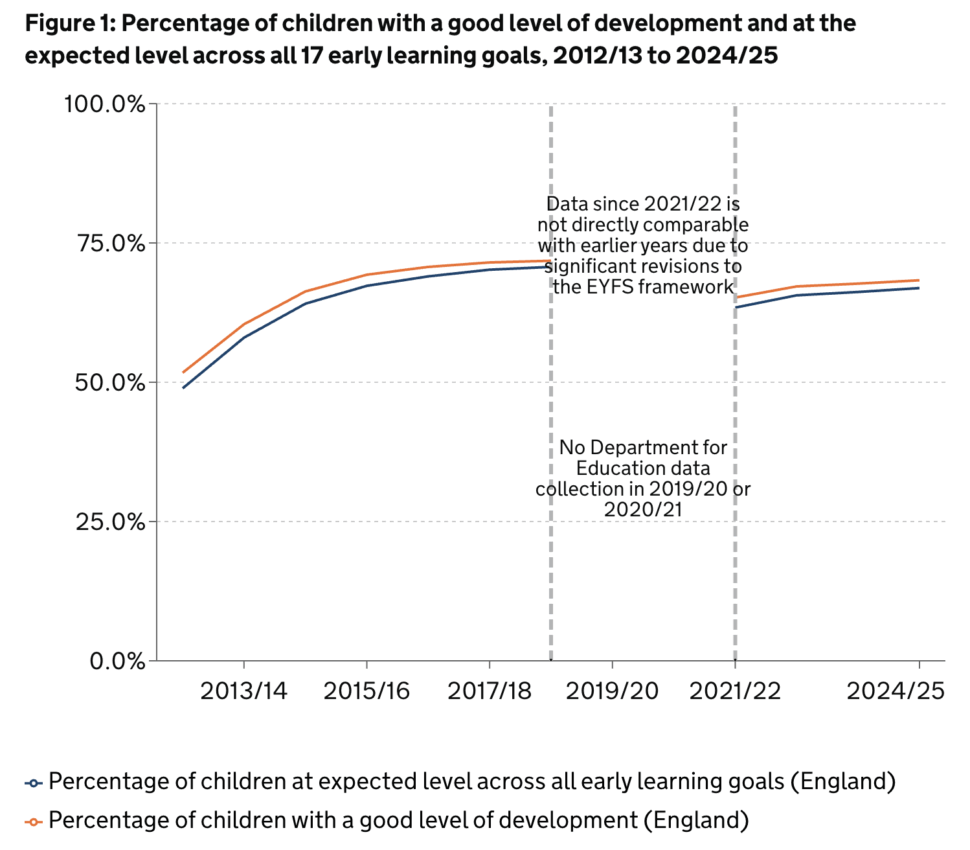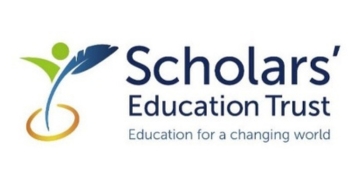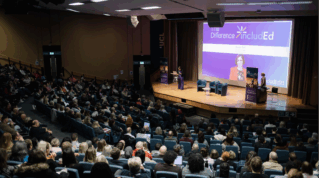The proportion of reception pupils achieving a “good level” of development has risen slightly this year, but the rate of improvement will need to increase considerably for government to hit its “school ready” target.
Last academic year, 68.3 per cent of pupils hit this marker in the Early Years Foundation Stage profile assessments, results published this morning show.
This is up 0.6 percentage points from 2023-24 and 3.1 percentage points from 2021-22.
Last year, Labour set out its “school ready” pledge for three-quarters of five year olds to achieve a good level of development by 2028.
The measure assesses children’s progress across areas such as language, personal, social and emotional development and maths and literacy.
But the highest it has ever been is 71.8 per cent, and that was under an old assessment system.
For Labour to meet its 75 per cent target, the average rise each year would have to equate to 1.7 percentage points – compared to this year’s rise of just 0.6 percentage points.
This year, the disadvantage gap has also widened again. It now sits at 21.3 points, up from 20.5 points last year.
Just 51.3 per cent of free school meal-eligible pupils achieved a “good level” of development, compared to 72.5 per cent of their wealthier peers.
There has been a slight increase in the number of pupils with special educational needs provision achieving the “good level”, from 19.7 per cent last year to 20.6 per cent this year.
The gap has narrowed between boys and girls, by 0.6 points, but girls still perform higher (75.3 per cent) compared to boys (61.6 per cent).

The Department for Education said it was not possible to ascertain the scale of the impact of the pandemic on the development of children at the end of EYFS as the profile was revised in 2021, meaning results are not comparable.
It said the increase in “good development” may be because of the “gradual recovery” from pandemic disruption and “practitioners having greater familiarisation with the new assessment framework”.















Your thoughts